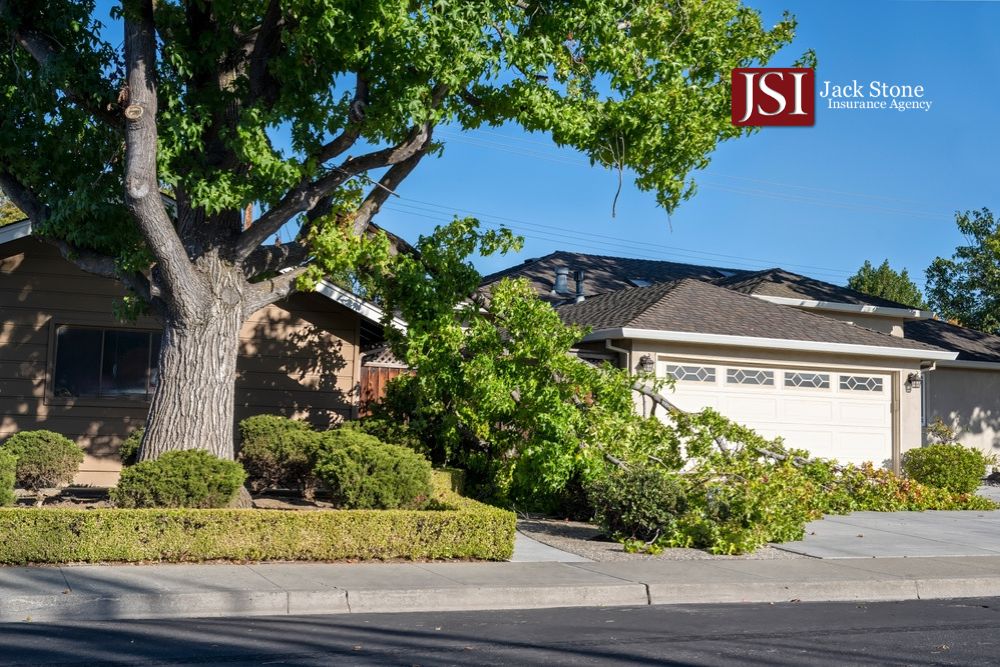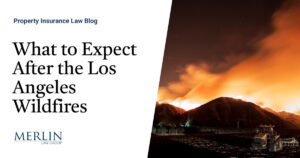Fallen Tree Coverage: Will Your Home Insurance Cover It?

Imagine this: you come home to a chaotic scene – a massive branch or even an entire tree has fallen victim to a storm, causing damage to your roof or property. Here, a crucial question arises: will your home insurance cover this? Let’s explore the complexities of fallen tree coverage and clarify what your policy might or might not protect.
Does Home Insurance Cover Falling Trees?
Generally, standard homeowners insurance policies cover damage to your house caused by fallen trees if the cause is a covered peril. Common covered perils include:
Windstorm: If a strong windstorm knocks over a tree and damages your roof, siding, or other parts of your house, your insurance should cover the repairs.
Lightning: A lightning strike that splits a tree, causing it to fall on your property, is typically covered under most homeowners insurance policies.
Hail: Severe hailstorms can damage trees, making them more susceptible to falling. Your insurance should cover the damage if hail-damaged branches fall on your house.
Does Home Insurance Cover Tree Removal?
Most homeowners insurance policies do not cover the removal of fallen trees. This is because removing the tree is considered debris removal, which usually falls outside the scope of standard coverage.
However, there are some exceptions:
If the fallen tree is blocking access to your home or creating a safety hazard, your insurance company might cover the removal cost. This is because the company is interested in preventing further damage to your property.
Some policies offer add-on coverage for tree removal. This additional coverage can help offset the cost of removing fallen trees, even if they haven’t damaged your house.
What If the Neighbor’s Tree Fell on My House?
Suppose your neighbor’s tree falls on your property. In that case, your homeowners insurance should still cover the damage to your house, assuming the cause of the fall was a covered peril (like a windstorm) and your policy doesn’t have specific exclusions.
Here’s the key: your insurance company will pursue reimbursement from your neighbor’s insurance company. This process is called subrogation, and it essentially means your insurance company seeks to recoup the money they paid you from the party ultimately responsible for the damage (your neighbor, in this case).
It’s important to document the situation thoroughly. Take pictures of the fallen tree, the damage to your house, and any visible signs of decay or damage on the neighbor’s tree. This documentation will be crucial for your insurance company when pursuing subrogation.
Who Pays for the Tree Falling on Your Neighbor’s Property?
The situation flips if the tree on your property falls and damages your neighbor’s house. In this scenario, your liability insurance (part of your homeowners insurance policy) would likely cover the repairs to your neighbor’s property.
However, there are some factors to consider:
Negligence: If your neighbor can prove you neglected to properly maintain the tree on your property, leading to its fall, your insurance company might deny your claim.
Tree health: If the fallen tree showed signs of obvious decay or disease that you ignored, it could be considered negligence on your part.
Navigate the Complexities of Home Insurance with Jack Stone Insurance Agency
Understanding fallen tree coverage in your homeowners insurance policy can save you significant stress and financial burden in such an unfortunate event. At Jack Stone Insurance Agency, our experienced agents can help you review your existing policy and determine if additional tree removal coverage might benefit your specific situation. Contact us today to get started. Call us at (925) 392-8365 for further assistance.


